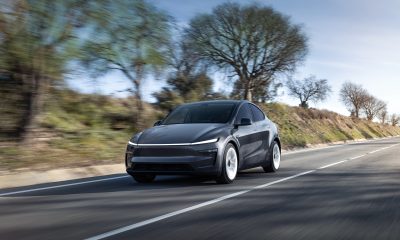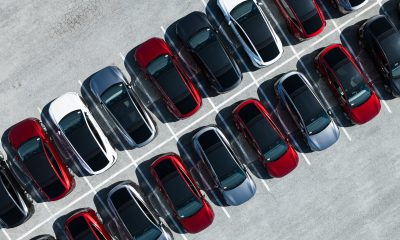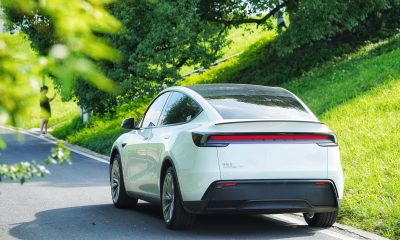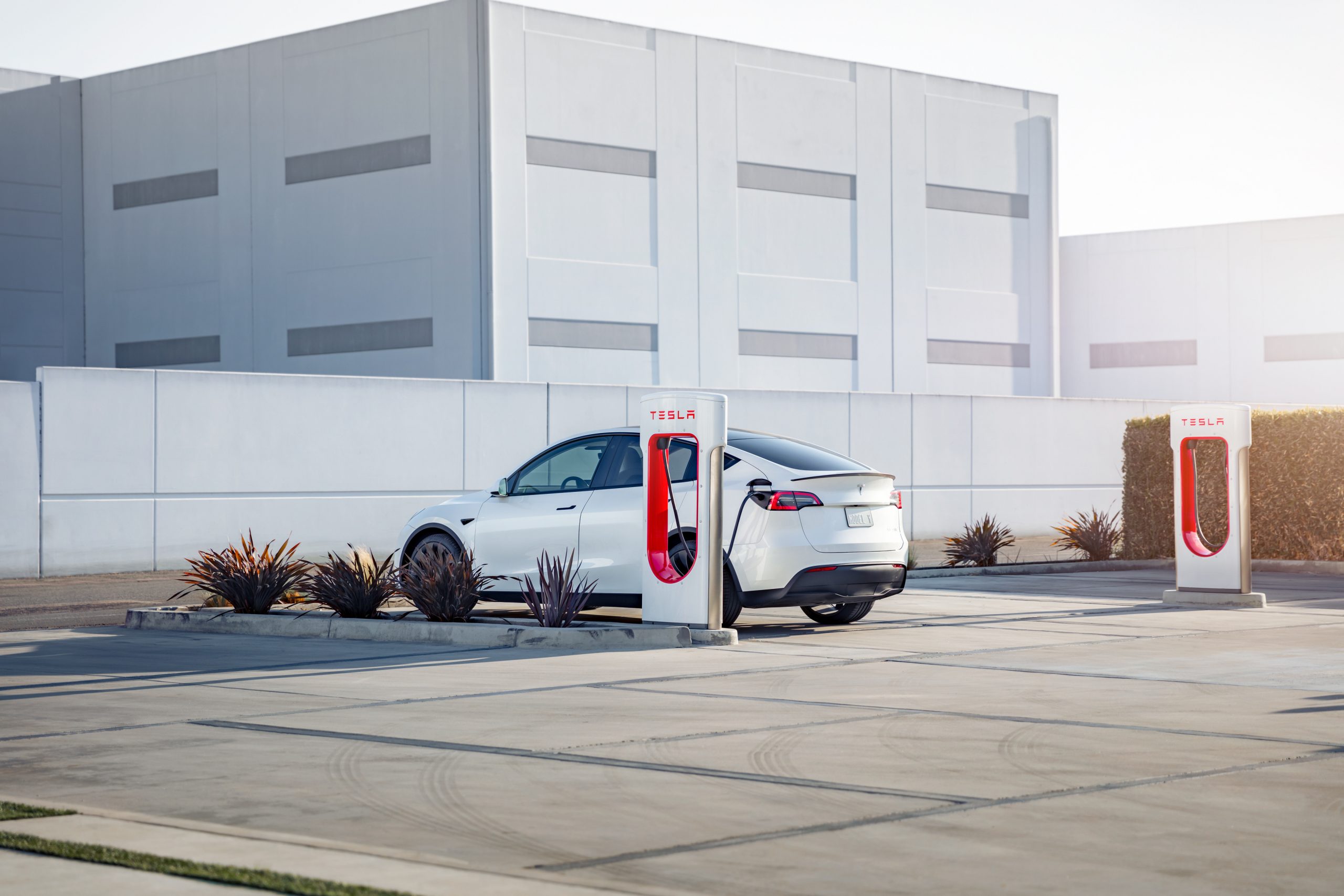

News
Opinion: Biden’s Tesla snub shows that clout, not innovation, is driving the American EV revolution
There was something missing during the Biden administration’s EV event at the White House on Thursday. While the event was promoted as a landmark meeting that signifies America’s commitment to embracing sustainable transportation, the world’s undisputed EV leader was noticeably absent. Eventually, one thing became quite clear — it is clout, not innovation, that is still driving the mainstream American EV revolution.
The Biden administration’s goals seemed good on paper, with the president announcing a national target of electric cars making up half of all new vehicle sales by 2030. Executives from the Detroit Big 3 were there, and for all intents and purposes, the event presented a venue for the administration and legacy automakers to somewhat pat themselves on the back for accepting sustainable transportation. This was despite the administration looking at hybrids, which are still equipped with a combustion engine, on the same playing field as zero-emissions vehicles like battery-electric cars.
Tesla’s absence in the White House EV event was noticeable. Elon Musk confirmed on Twitter that Tesla was not invited at all, and during the event, even netizens were quick to point out that an American automaker that practically forced the entire auto industry to shift to electric cars was strangely not invited to the White House. In a press briefing, White House press secretary Jenn Psaki was directly asked about Tesla’s absence, and her response was telling. “These are the three largest employers of the United Auto Workers (UAW), so I’ll let you draw your own conclusion,” she said.
The Elephant in the Room
Since its campaign days, the Biden administration has been clear that it supports electric vehicles. It was a good narrative, and it was the perfect foil to the Trump administration’s less-than-stellar commitment to zero-emissions transportation. Biden has always made it clear: he supports electric cars, especially those that are made by American labor. But over the past months, and amidst Biden’s appearances prior to the release of the Ford F-150 Lightning, one thing became clear: The administration is fond of EVs that are made in the United States — but only if they are produced through union work.
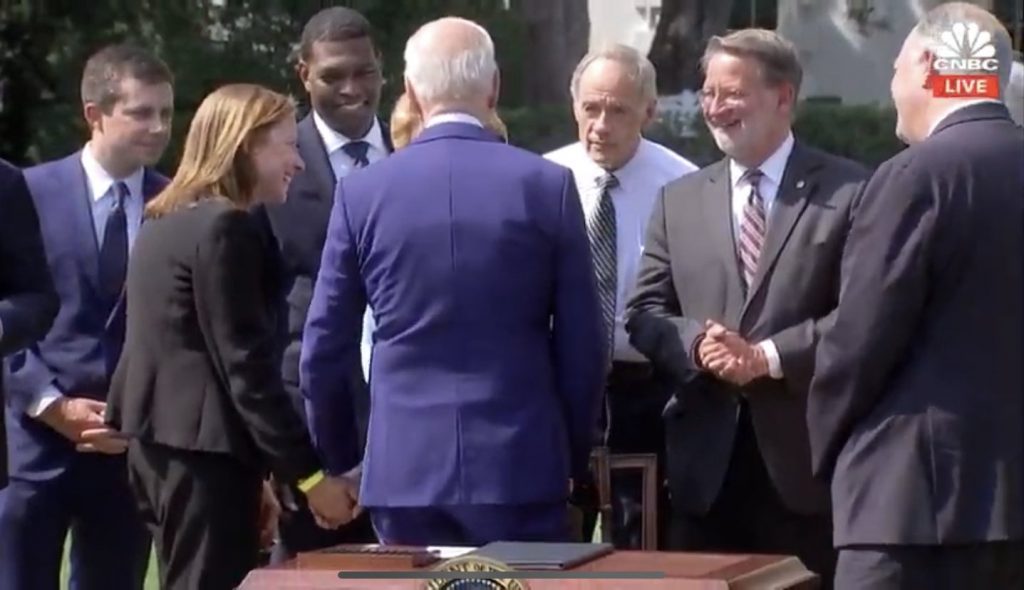
Electric cars that are made in America but not through union work like Teslas simply don’t get as much recognition — or any recognition at all. This was particularly evident in statements from Transportation Secretary Pete Buttigieg, who hobbled through his responses in a CNBC appearance in what appeared to be a conscious effort to avoid stating Tesla’s name. It was also very evident in the fact that the US President personally made it a point to mention union work numerous times during the White House EV event.
What is particularly interesting is that there is a reason why Tesla does not use union work in its Fremont Factory, unlike its Grohmann facility in Germany. It’s easy to run away with the narrative that Elon Musk is a tyrannical boss who intimidates employees to avoid them from joining the UAW, but the truth is more nuanced than that. It should be noted that the Fremont Factory, before it was bought by Tesla, was actually a plant powered by union work. And its closure, which effectively ended an ambitious project that was supposed to bring Japanese efficiency to American automaking, is something worth looking into.
A History Swept Under the Rug
The United Auto Workers’ mission is to fight for the rights of all workers, organize unions, and bargain and win fair wages and benefits of its members. But the Fremont Factory, even in its early days, was not exactly a picture-perfect example of how the UAW and an automaker could coexist together. Bruce Lee, a former running back from the University of Arkansas who was in charge of the GM Fremont Factory’s union before the facility became NUMMI, noted that tensions were typically high between unionized workers and management.
“It was considered the worst workforce in the automobile industry in the United States. And it was a reputation that was well-earned. Everything was a fight. They spent more time on grievances and on things like that than they did on producing cars. They had strikes all the time. It was just chaos constantly,” Lee said, adding that a 20% absenteeism was normal . This was echoed by noted author Jeffrey Liker, who interviewed workers at the GM Fremont plant’s early days. According to Liker, things were so bad at the plant that alcohol use, intercourse, and drug use were rampant among the employees. Defects in cars were typical too. Billy Hagerty, who used to put hoods and fenders on the plant, noted that quality of the cars from the GM Fremont plant was so bad that some Buick Regals had Buick Monte Carlo front ends, and vice versa.

The UAW was particularly powerful then, and this contributed to the GM Fremont factory’s workers practically running wild, with some workers intentionally putting coke bottles and loose bolts on door panels to spite the management and trigger customer complaints. GM eventually shut the plant down in 1982, laying off about 5,000 workers. The site was later transformed into New United Motor Manufacturing, Inc. (NUMMI) under a joint venture between Toyota and GM. But while the site hit the ground running thanks to Toyota’s highly efficient production techniques and its focus on teamwork, issues in the plant eventually arose. When General Motors filed for Chapter 11 bankruptcy in 2009, GM announced that it would pull out of the facility, which eventually resulted in NUMMI being shut down for good.
NUMMI’s shutdown was not received well by its unionized workers. During a meeting between NUMMI employees and UAW officials, things became so heated that an outraged older worker and union official ended up in a cussing match. A physical altercation almost happened. It was then no surprise that years later, and as CEO Elon Musk would note, the UAW would eventually fail to gain a foothold at the Tesla Fremont Factory. Tesla may not have hired the same workers from NUMMI, but some of those who work in the company today likely remember the history of the plant — and how it was let down by the UAW.
An Unrestrained Narrative — The UAW’s Favorable Streak
The Biden administration seems all too content to sweep this history under the rug. If his comments during the White House EV event were anything to go by, America’s electric vehicle shift is only lauded and recognized by the powers that be if unions are involved. This is almost ironic, considering that as recently as 2019, about 48,000 unionized GM workers held a strike because the company was looking to adopt electric vehicles. UAW Research Director Jennifer Kelly explained the workers’ reservations in a statement to CNBC then. “EV powertrains are simple compared to internal combustion engines. The simplicity could reduce the amount of labor, and thus jobs, associated with vehicle production,” Kelly said.
At this point, it seems high time to recognize that Tesla is an American success story that will not be celebrated, at least while the Biden administration is focused only on union-made electric vehicles. This means that Tesla would remain uninvited for landmark events such as this past Thursday’s EV meet at the White House, and it would likely remain a company that officials would refuse to acknowledge or name for its contributions to the country’s transition to electric cars.
This means that a narrative — even one that may not necessarily be accurate — could start settling in. A look at a statement from Ford Executive Chair Bill Ford following the White House event shows that such a thing is now happening. “I am proud that Ford is leading the electric revolution… Ford has always been a leader in sustainability,” he noted. Such a statement would likely be accepted as truth by many, or at least by those who are unfamiliar with the uphill climb that Tesla has gone through in its efforts to force the industry to embrace EVs.

And amidst this, the UAW would likely be painted quite favorably. A company like Tesla, not so much. What is rather interesting is that a similar event has happened in the past. Back when the NUMMI was under threat of being shut down, the UAW opted to point the blame at Toyota. This was despite GM being the first company that pulled out of the facility. An article from the The New York Times was panned by actual NUMMI workers after it stated that Toyota’s decision to close up shop was the “foulest form of ingratitude.” Ironically, even unionized workers from NUMMI had issues with how Toyota was painted then, with some stating that GM and the UAW must take just as much blame for the facility’s failure.
A Tesla-shaped Punching Bag and an Underdog Story
What is rather interesting about the Biden administration’s focus on union-made EVs is the fact that organizations such as UAW have actually been steadily losing power. The UAW’s power may have been evident in the Fremont Factory’s pre-NUMMI days, but today, both its influence and its membership are quite far from their heights. UAW membership declined by nearly 10% in 2018 alone, with the organization losing over 35,000 members, and that was a year when 264,000 new manufacturing jobs were added to the US.
If there is something that the Biden administration has done with its recent Tesla snub, it is to highlight the company’s image as an underdog. And this, in a lot of ways, could backfire. The world loves underdogs, after all, and Tesla has always been one, from its days as a small electric sports car maker with grand plans to change the auto industry, until today, when it serves as a punching bag of sorts for critics of both the climate crisis and EVs as a whole. Matt Johnson Ph.D., an author and a professor at Hult International Business School in San Francisco, noted that people will always be drawn to underdogs because they tend to drive feelings of empathy and hope.
This is something that is very true of Tesla. Tesla may dwarf legacy auto today by market cap, but things like the Biden administration’s White House snub helps the company maintain its underdog status. This is arguably one of the reasons why Tesla and its CEO, Elon Musk, have such a strong following. The “cult” of Elon Musk and Twitter controversies and debates aside, it is difficult not to give a nod of respect to a company that pulled legacy automakers kicking and screaming towards an electric age. And the more Tesla is ignored or snubbed, the more influence the company may actually have.
“When we are led to believe that a company succeeded against external disadvantages (like an economic recession, for instance), we identify with the situation. The more we identify and internalize the gravity of the story, the more we root for it. There’s evidence indicating that brands with an underdog story can increase the intention to purchase and influence brand loyalty,” Johnson noted.
Don’t hesitate to contact us with news tips. Just send a message to tips@teslarati.com to give us a heads up.
News
Tesla UK sales see 14% year-over-year rebound in June: SMMT data
The SMMT stated that Tesla sales grew 14% year-over-year to 7,719 units in June 2025.
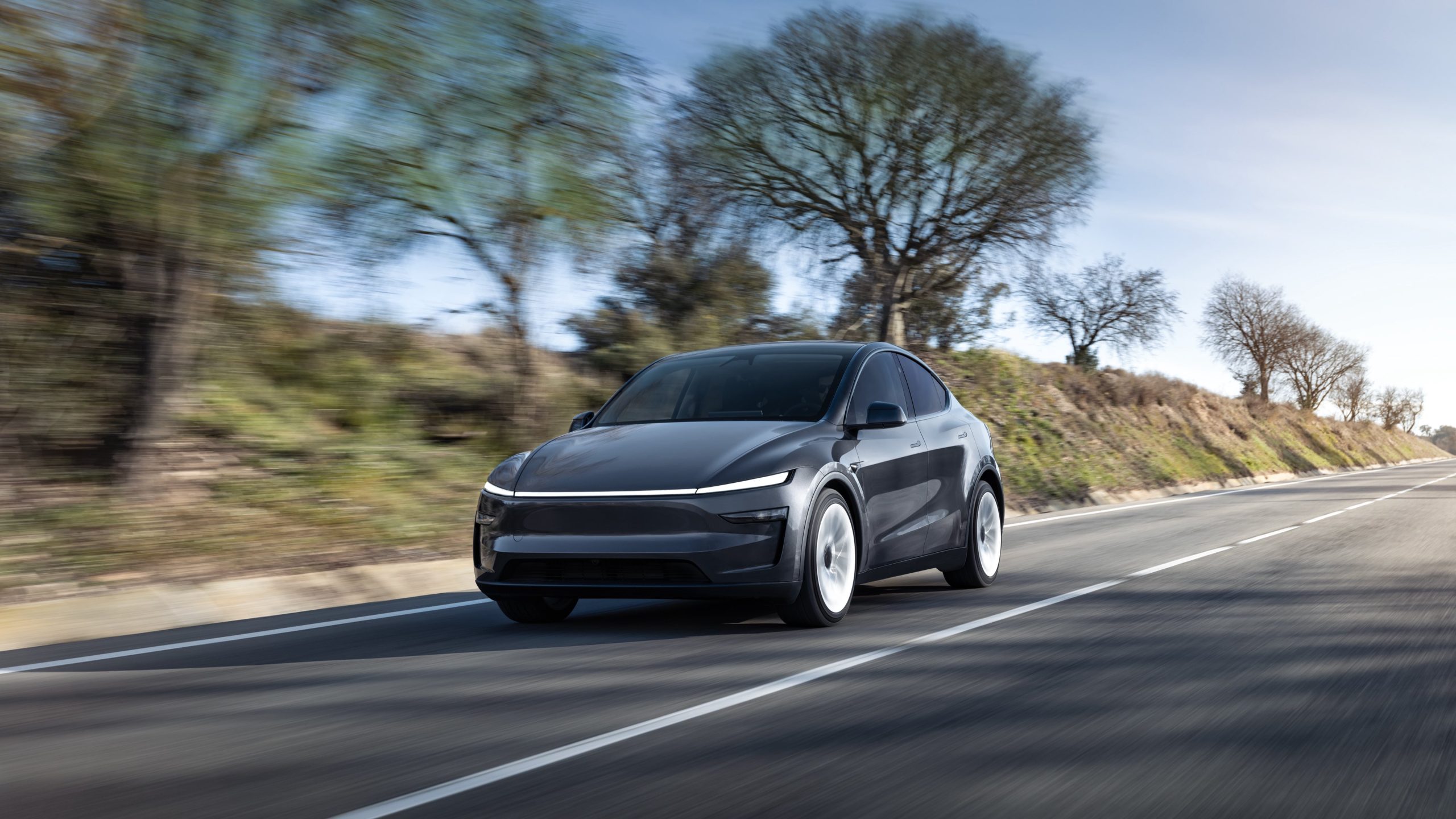
Tesla’s sales in the United Kingdom rose in June, climbing 14% year-over-year to 7,719 units, as per data from the Society of Motor Manufacturers and Traders (SMMT). The spike in the company’s sales coincided with the first deliveries of the updated Model Y last month.
Model Y deliveries support Tesla’s UK recovery
Tesla’s June performance marked one of its strongest months in the UK so far this year, with new Model Y deliveries contributing significantly to the company’s momentum.
While the SMMT listed Tesla with 7,719 deliveries in June, independent data from New AutoMotive suggested that the electric vehicle maker registered 7,891 units during the month instead. However, year-to-date figures for Tesla remain 2% down compared to 2024, as per a report from Reuters.
While Tesla made a strong showing in June, rivals are also growing. Chinese automaker BYD saw UK sales rise nearly fourfold to 2,498 units, while Ford posted the highest EV growth among major automakers, with a more than fourfold increase in the first half of 2025.
Overall, the UK’s battery electric vehicle (BEV) demand surged 39% to to 47,354 units last month, helping push total new car sales in the UK to 191,316 units, up 6.7% from the same period in 2024.
EV adoption accelerates, but concerns linger
June marked the best month for UK car sales since 2019, though the SMMT cautioned that growth in the electric vehicle sector remains heavily dependent on discounting and support programs. Still, one in four new vehicle buyers in June chose a battery electric vehicle.
SMMT Chief Executive Mike Hawes noted that despite strong BEV demand, sales levels are still below regulatory targets. “Further growth in sales, and the sector will rely on increased and improved charging facilities to boost mainstream electric vehicle adoption,” Hawes stated.
Also taking effect this week was a new US-UK trade deal, which lowers tariffs on UK car exports to the United States from 27.5% to 10%. The agreement could benefit UK-based EV producers aiming to expand across the country.
News
Tesla Model 3 ranks as the safest new car in Europe for 2025, per Euro NCAP tests
Despite being on the market longer than many of its rivals, the Tesla Model 3 continues to set the bar for vehicle safety.
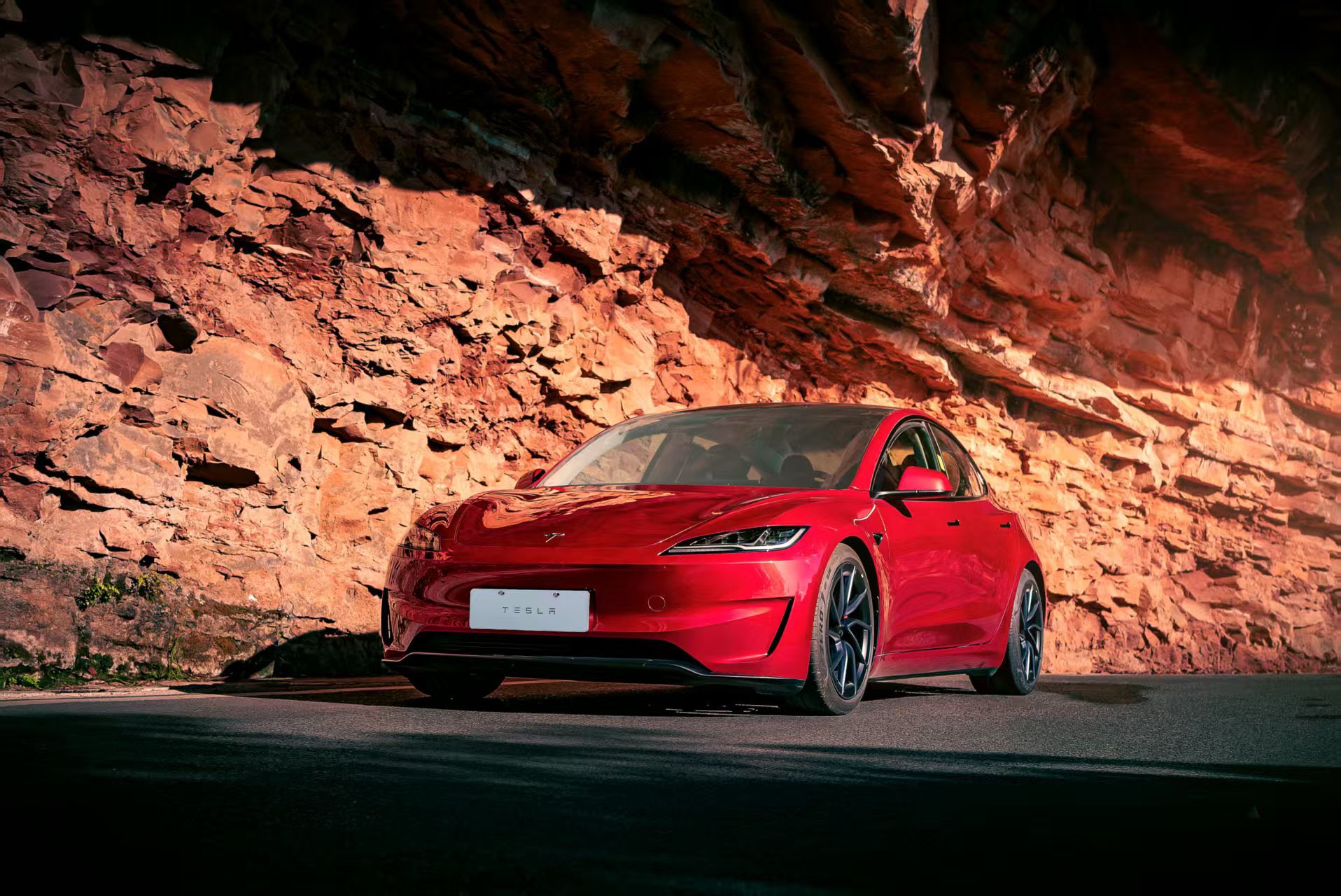
The Tesla Model 3 has been named the safest new car on sale in 2025, according to the latest results from the Euro NCAP. Among 20 newly tested vehicles, the Model 3 emerged at the top of the list, scoring an impressive 359 out of 400 possible points across all major safety categories.
Tesla Model 3’s safety systems
Despite being on the market longer than many of its rivals, the Tesla Model 3 continues to set the bar for vehicle safety. Under Euro NCAP’s stricter 2025 testing protocols, the electric sedan earned 90% for adult occupant protection, 93% for child occupant protection, 89% for pedestrian protection, and 87% for its Safety Assist systems.
The updated Model 3 received particular praise for its advanced driver assistance features, including Tesla’s autonomous emergency braking (AEB) system, which performed well across various test scenarios. Its Intelligent Speed Assistance and child presence detection system were cited as noteworthy features as well, as per a WhatCar report.
Other notable safety features include the Model 3’s pedestrian-friendly pop-up hood and robust crash protection for both front and side collisions. Euro NCAP also highlighted the Model 3’s ability to detect vulnerable road users during complex maneuvers, such as turning across oncoming traffic.
Euro NCAP’s Autopilot caution
While the Model 3’s safety scores were impressive across the board, Euro NCAP did raise concerns about driver expectations of Tesla’s Autopilot system. The organization warned that some owners may overestimate the system’s capabilities, potentially leading to misuse or inattention behind the wheel. Even so, the Model 3 remained the highest-scoring vehicle tested under Euro NCAP’s updated criteria this year.
The Euro NCAP’s concerns are also quite interesting because Tesla’s Full Self-Driving (FSD) Supervised, which is arguably the company’s most robust safety suite, is not allowed for public rollout in Europe yet. FSD Supervised would allow the Model 3 to navigate inner city streets with only minimal human supervision.
Other top scorers included the Volkswagen ID.7, Polestar 3, and Geely EX5, but none matched the Model 3’s total score or consistency across categories. A total of 14 out of 20 newly tested cars earned five stars, while several models, including the Kia EV3, MG ZS, and Renault 5, fell short of the top rating.
Elon Musk
Why Tesla’s Q3 could be one of its biggest quarters in history
Tesla could stand to benefit from the removal of the $7,500 EV tax credit at the end of Q3.

Tesla has gotten off to a slow start in 2025, as the first half of the year has not been one to remember from a delivery perspective.
However, Q3 could end up being one of the best the company has had in history, with the United States potentially being a major contributor to what might reverse a slow start to the year.
Earlier today, the United States’ House of Representatives officially passed President Trump’s “Big Beautiful Bill,” after it made its way through the Senate earlier this week. The bill will head to President Trump, as he looks to sign it before his July 4 deadline.
The Bill will effectively bring closure to the $7,500 EV tax credit, which will end on September 30, 2025. This means, over the next three months in the United States, those who are looking to buy an EV will have their last chance to take advantage of the credit. EVs will then be, for most people, $7,500 more expensive, in essence.
The tax credit is available to any single filer who makes under $150,000 per year, $225,000 a year to a head of household, and $300,000 to couples filing jointly.
Ending the tax credit was expected with the Trump administration, as his policies have leaned significantly toward reliance on fossil fuels, ending what he calls an “EV mandate.” He has used this phrase several times in disagreements with Tesla CEO Elon Musk.
Nevertheless, those who have been on the fence about buying a Tesla, or any EV, for that matter, will have some decisions to make in the next three months. While all companies will stand to benefit from this time crunch, Tesla could be the true winner because of its sheer volume.
If things are done correctly, meaning if Tesla can also offer incentives like 0% APR, special pricing on leasing or financing, or other advantages (like free Red, White, and Blue for a short period of time in celebration of Independence Day), it could see some real volume in sales this quarter.
You can now buy a Tesla in Red, White, and Blue for free until July 14 https://t.co/iAwhaRFOH0
— TESLARATI (@Teslarati) July 3, 2025
Tesla is just a shade under 721,000 deliveries for the year, so it’s on pace for roughly 1.4 million for 2025. This would be a decrease from the 1.8 million cars it delivered in each of the last two years. Traditionally, the second half of the year has produced Tesla’s strongest quarters. Its top three quarters in terms of deliveries are Q4 2024 with 495,570 vehicles, Q4 2023 with 484,507 vehicles, and Q3 2024 with 462,890 vehicles.
-

 Elon Musk4 days ago
Elon Musk4 days agoTesla investors will be shocked by Jim Cramer’s latest assessment
-

 News1 week ago
News1 week agoTesla Robotaxi’s biggest challenge seems to be this one thing
-

 Elon Musk2 weeks ago
Elon Musk2 weeks agoFirst Look at Tesla’s Robotaxi App: features, design, and more
-

 News2 weeks ago
News2 weeks agoSpaceX and Elon Musk share insights on Starship Ship 36’s RUD
-

 News2 weeks ago
News2 weeks agoWatch Tesla’s first driverless public Robotaxi rides in Texas
-
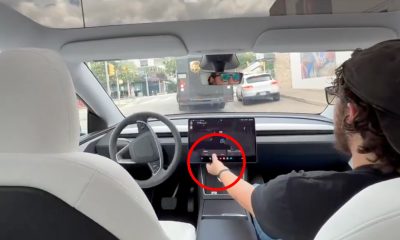
 News1 week ago
News1 week agoWatch the first true Tesla Robotaxi intervention by safety monitor
-
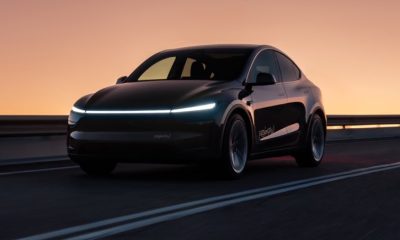
 News2 weeks ago
News2 weeks agoTesla has started rolling out initial round of Robotaxi invites
-
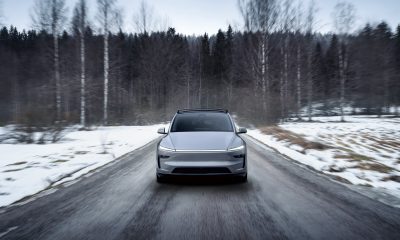
 Elon Musk2 weeks ago
Elon Musk2 weeks agoTesla to launch in India in July with vehicles already arriving: report


